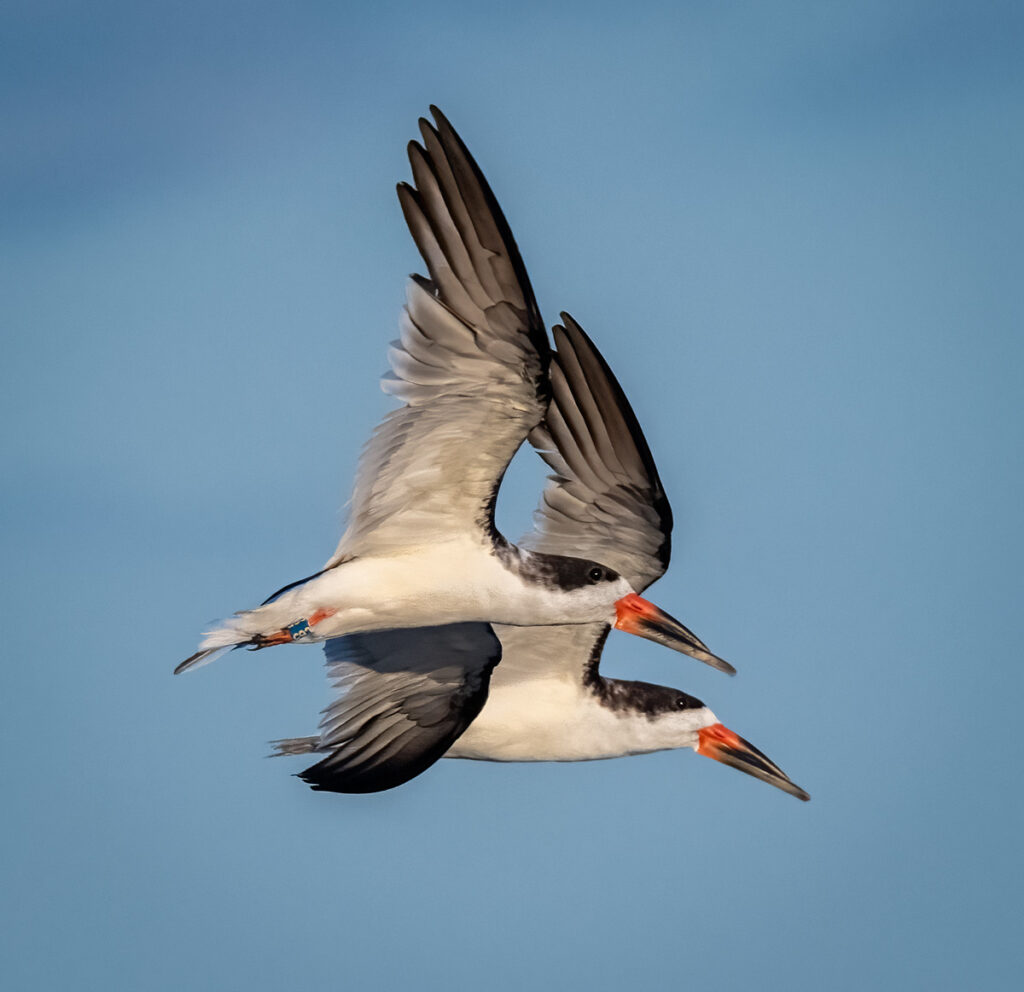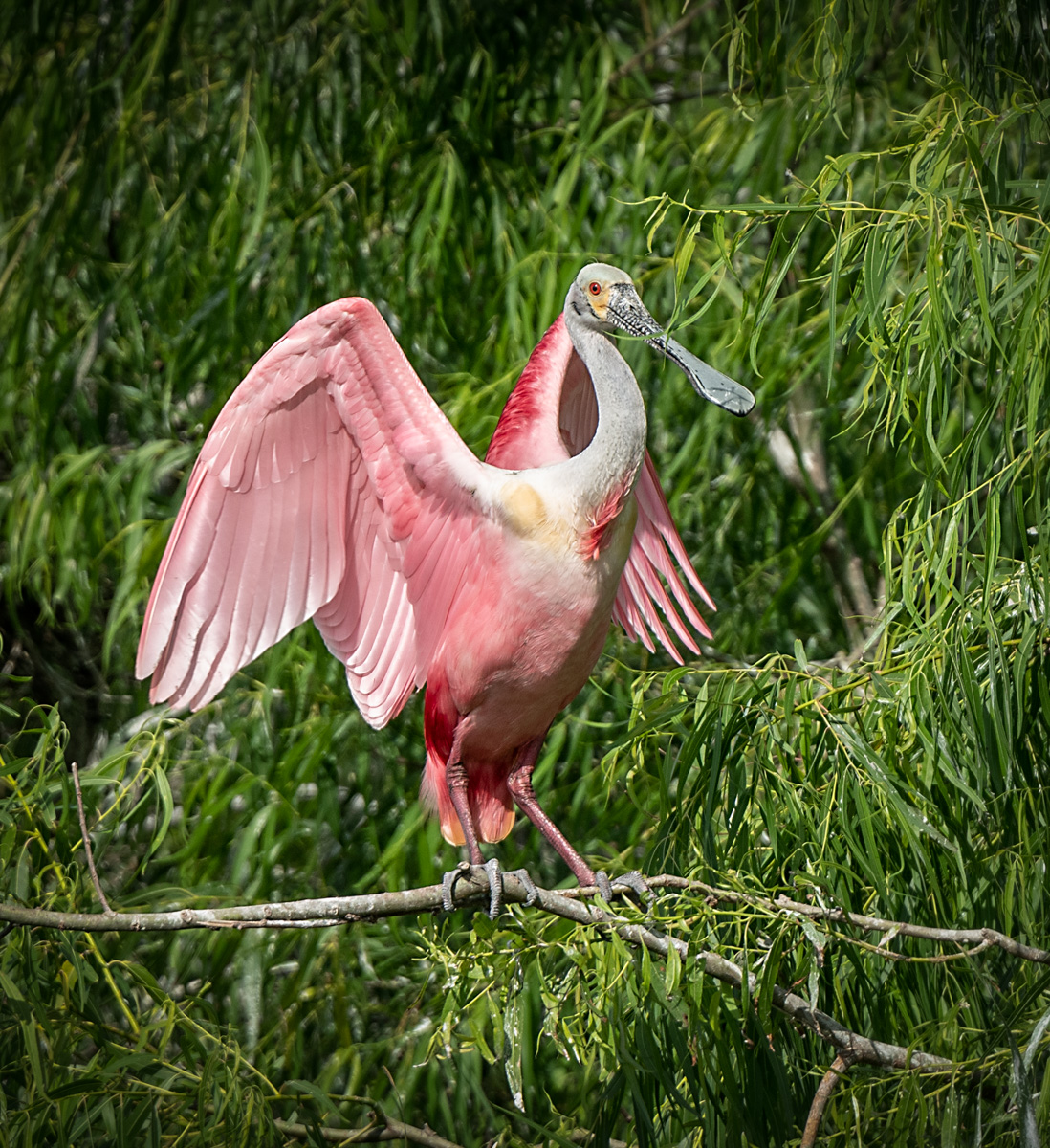
For many species, a bird’s bill is its primary tool for catching its food. There is huge variation among bill sizes and shapes, but more often than not, they will have a similar overall appearance and function and comprised of an upper and lower mandible that usually meets at the ends. In today’s blog, we’re going to look at some highly specialized bills and discover how their purpose defines their shape.
Being able to notice the differences in bills among species that look similar in terms of size and plumage can be an excellent tool in your ID kit. Consider the many types of shorebirds we can see, especially those who populate mudflats waiting for the tides to ebb to reveal the sandy substrate their food is hiding in. Lesser Yellowlegs and Solitary Sandpipers are a perfect example of two species that are so similar in every way, especially if their legs are submerged and the more greenish shade of the sandpiper’s can’t be determined. But look closely at those bills; do you see how the sandpiper’s is ever so slightly decurved, drooping down at the end, yet the yellowlegs’ bill is straight and true like an arrow?
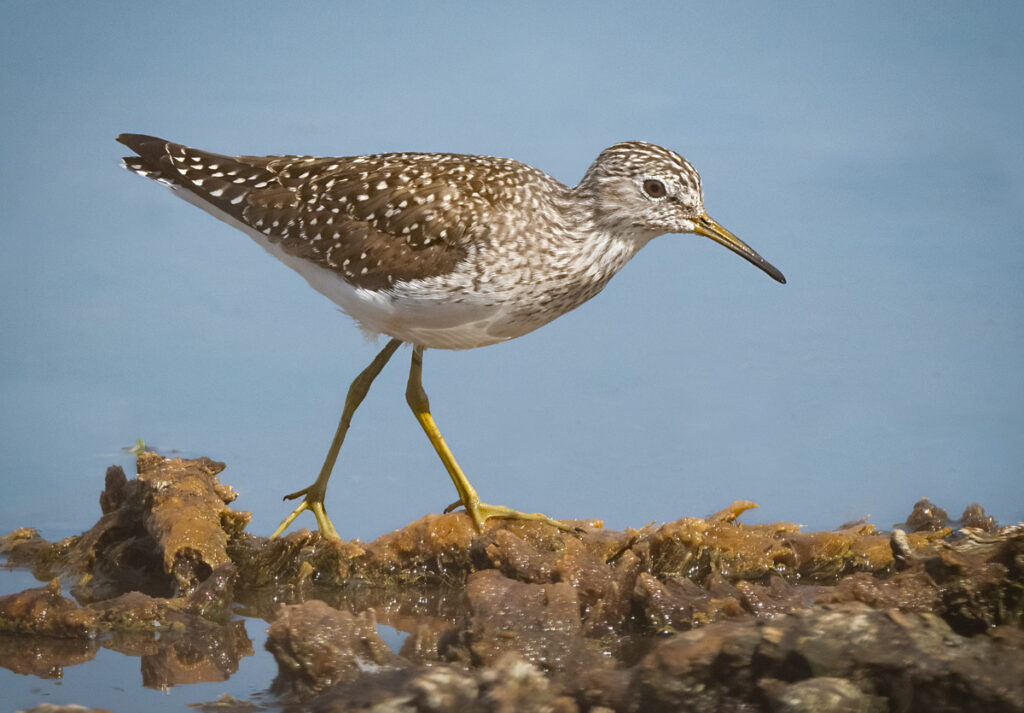
Thankfully there are some species whose bills are so unique that it is hard to mistake them for anything else. Let’s take a look at 5 of these and why their bills are that particular shape.
SPOONBILL
The clue is in the name – look at the long handle and that spatulate end. These birds feed on all things hidden under the water, using their bills in a back and forth motion known as head-swinging, scooping up food such as mollusks, crustaceans, amphibians, insects, and small species of fish in that wide bowl. By holding their bills almost vertically in the water, they disturb the bottom and flush out their food, expertly spooning it up into their bills as they go. Note how the nostrils are at the base near the head so that it can breathe as the other end does all the work.
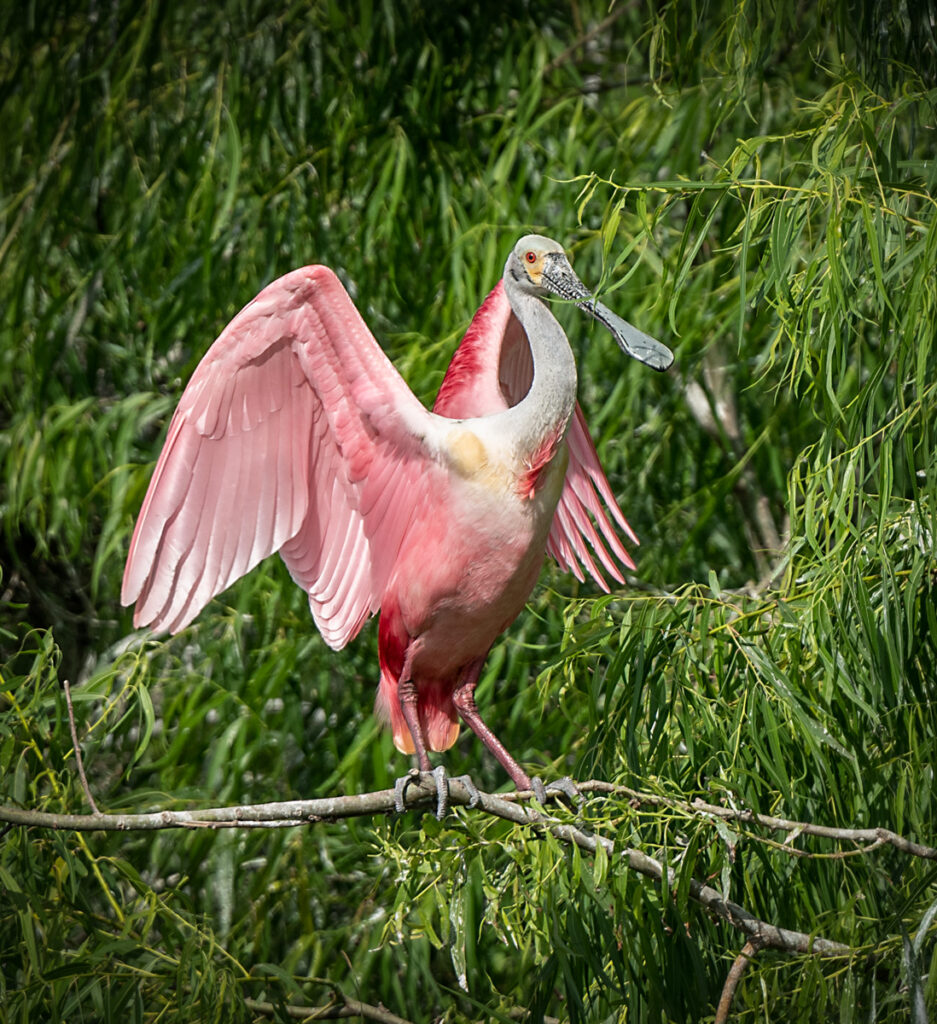
SWORD-BILLED HUMMINGBIRD
Another bird whose name is taken from its most visible characteristic, the bill of this small hummer puts it in a class of its own – they are the only known bird to have a bill longer than its body. Coming in at around 10cm, these rapier-like bills actually start off proportional to the baby bird but then grow faster than the rest of the creature it is attached to. The bills have developed this excessive length over millennia as the hummingbirds have adapted to their niche environment along the Andean chain from Venezuela to Bolivia where a certain type of passionflower grows, whose trumpet-shaped blooms trap juicy insects and nectar deep within. As these birds’ bills are so long, they have to use their feet to scratch and preen.
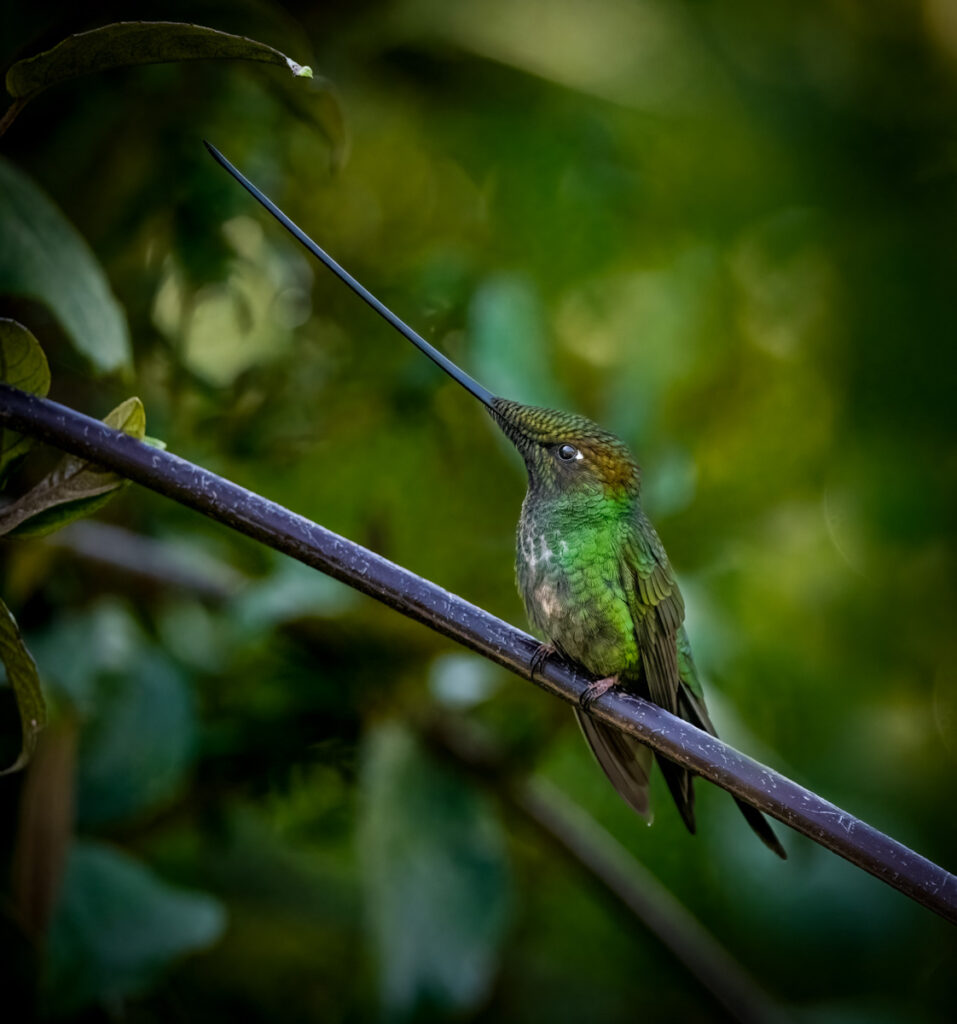
AMERICAN PELICAN
These huge white birds feed from the water’s surface, unlike the brown pelican which is a plunge diver. Despite that massive yellow bill contributing to them being one of the heaviest birds in the world, they are adept at soaring for long distances.
Their bills are flat on top with an expandable throat sac below which can hold up to 3 gallons of water as they fish, draining out the water and gulping down the contents once empty. These pelicans also often up-end whilst fishing, like dabbling ducks. Not surprising given the weight at the front.
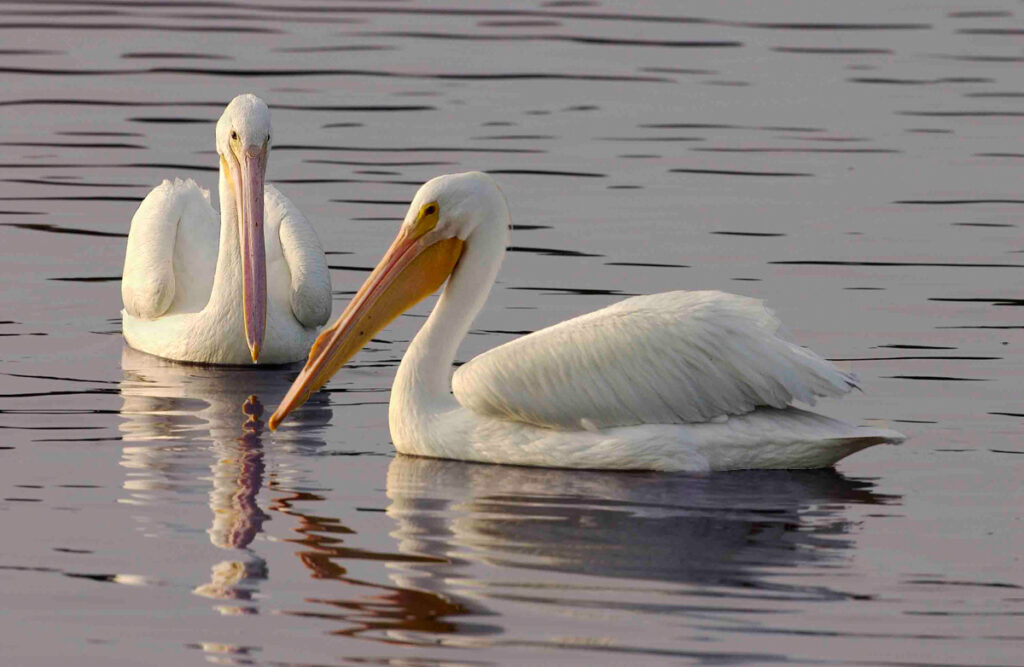
KEEL-BILLED TOUCAN
Also known as the sulfur-breasted toucan, this bird’s large and colorful bill provides it with another name, the rainbow-billed toucan. The bill averages around 12 to 15cm in length, comprising a third of the bird’s total length. Despite its size, the bill is surprisingly dexterous, allowing the toucan to reach fruits otherwise out of reach for other birds. Using the mandibles like a vice, it dissects the fruit and then tosses the food down its throat with a quick toss of its head.
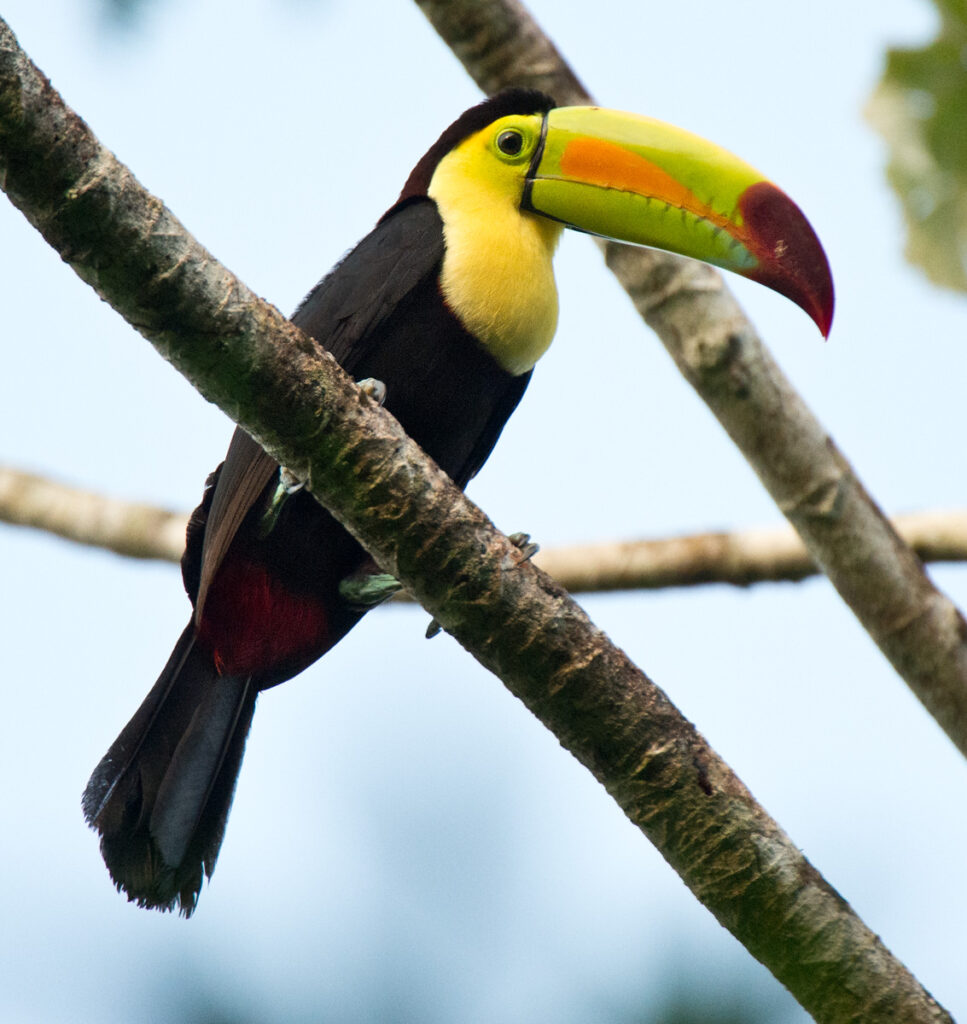
Scientists have been divided for centuries as to why toucans have such large bills, with Darwin proposing one popular opinion suggesting sexual desirability, whilst others claimed the ability to access distant fruit was the main reason. However, studies in the past decade have shown that the bill, riddled with tiny blood vessels, acts as a cooling device in the heat of the tropics. By opening and closing these vessels at will, the birds can lose anywhere between 5% and 100% of their body heat through that impressive feature.
BLACK SKIMMER
Looking a little like someone forgot to finish it off, the uniquely uneven bills on these seabirds may appear peculiar, but of course serve a specific purpose. Skimmers are aptly named – flying steadily and gracefully over the surface of the water, ploughing the larger, longer lower mandible just below the waves and skimming through the top few centimeters, scooping up fish and any other morsels floating nearby. Highly sensitive, once the lower bill detects food, the upper mandible snaps shut and the bird pulls away from the water to dine. Skimmers are also unique in that their eyes have vertical slitted pupils, designed to eliminate the glare of the white sands and sparkling waters of their habitat along the coastal waters of North America.
